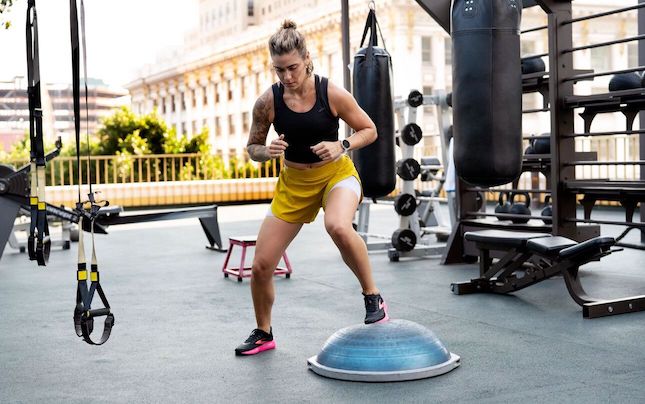3 benefits of core strength for runners

Sure, when running, your legs are the main mover, but your core is your powerhouse. And the benefits of core strength for runners — and all athletes, for that matter — can't be overstated.
1. A happier back
Back pain is a reality for many athletes and non-athletes alike. But regardless of your workout routine, research shows that strengthening your core can reduce the frequency and severity of backaches and pains.
For example, in one study from The Ohio State University Wexner Medical Center, researchers found that weak core muscles cause runners to run in a way that places more stress on both their spine and lower back muscles, increasing the risk of back pain.
2. Lower risk of injury
Backaches aside, core strength and stability reduce the chances of both acute and overuse, wear-and-tear exercise injuries. Core training is particularly beneficial when it comes to reducing hip and knee troubles, which are common across all sports.
3. Better (and easier) performances
As we've said, your core is the glue holding your arms and legs together. That means core strength can help you move with more strength throughout your whole body — and with a lot more efficiency.
For example, in a study published in PLOS One, an eight-week core training program improved the running economy of college athletes. Running economy refers to how much energy your body exerts to keep up a certain pace. As running economy improves, and it takes less and less effort to get from point A to B, the quicker and easier you'll get to the finish line.

How to strengthen your core
The benefits of core strength for runners and other athletes are clear. So, how can you improve your core strength? Here are three tips:
- Prioritize compound movements. Research suggests that training the core through total-body compound movements, as opposed to isolation exercises, has the greatest benefit on functional core strength. Prioritize farmer's carries and banded core rotations over crunches.
- Practice awareness. Your core is meant to support your torso in everything you do. During exercises like running, squatting, swimming, and biking, pay attention to your core and how you're using it. Actively brace it and, through repetition, you'll learn how to naturally engage your core muscles in your workouts. One common cue is to pretend like you're about to get punched in the abdomen.
- Mimic your sport. It benefits you to train your core strength in ways that are similar to your sport. So, if, for instance, you're a runner, it's great to train your core to stay stable as your arms and legs move, like in a dead bug. But, if you're a tennis or golf player, being able to rotate your core in exercises like wood chops is a major plus.
Strengthening your core — all of the muscles and structures that make up the torso — can reduce your risk of injury while also improving your performance. During your workouts, focus on engaging the core muscles through the movement patterns you already use in your sport.
Our writer's advice is intended for informational or general educational purposes only. We always encourage you to speak with your physician or healthcare provider before making any adjustments to your running, nutrition, or fitness routines.

